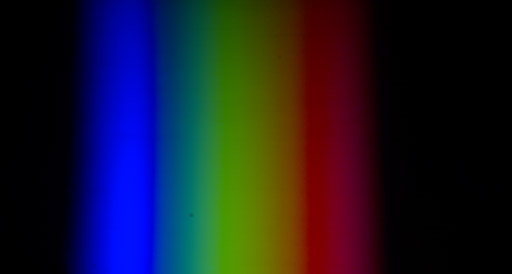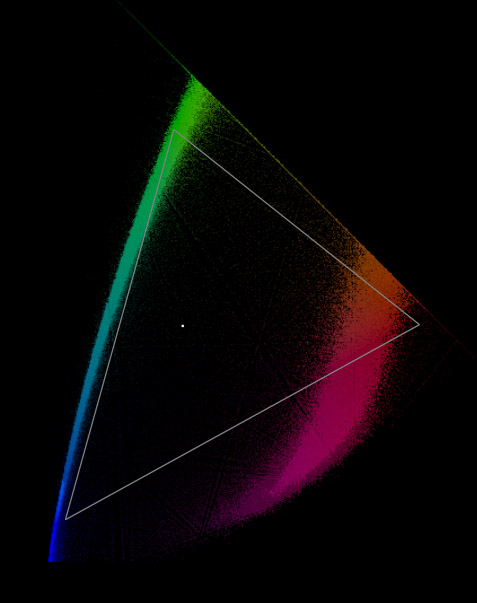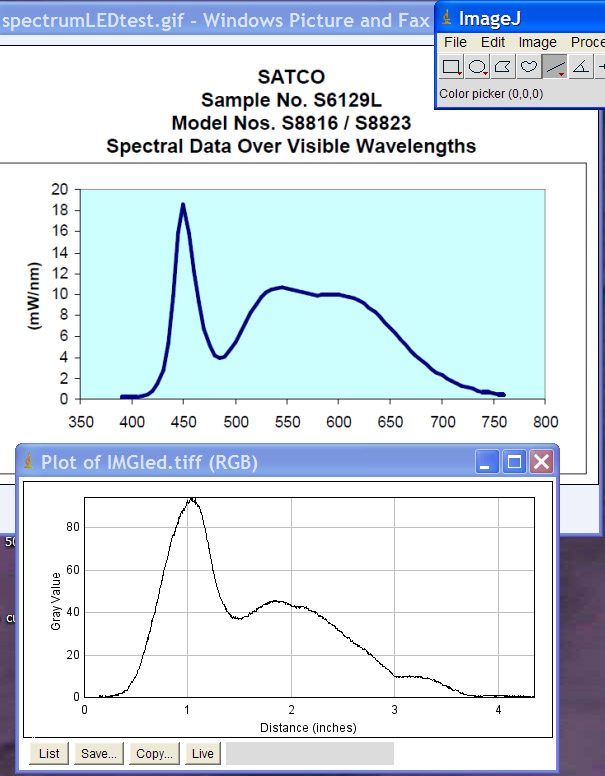Of course, most seem to prefer flash or halogen but I use 5000K LED floods for my own table-top purposes. They have a slight blue cast but my camera WB seems to handle it quite well. Next time, I might try the 4000K model which has less of a peak.

Do lamps age? Does their spectral emission change over time? Should you wait for CFL's to warm up? (Rhetorical questions, no need to reply!)
Here's how I checked my lamps spectrum, just out of curiosity:
I had made myself a toy spectroscope some time ago:

The razor blades form a slit. You shine a lamp near the slit, and a lens inside straightens out the resulting beam which then hits a diffraction grating at the other end - thereby creating a spectrum. Do please Google for the many ways to DIY.
I then shot the spectral image in RAW. Here's how it looks converted to a JPEG:

But how it looks in a JPEG is not the actual measureable spectrum. For that, the RAW has to be converted to a linear (gamma=1) TIFF file which is then opened with an analysis application. For a while I had some trouble finding the right applications and settings. Finally Dave Coffins' DCraw and ImageJ were good applications although early attempts didn't seem quite right. One problem was that the blue spike wasn't tall enough, compared to the manufacturers graph. Soon found out that the mighty Foveon sensor can capture quite a wide gamut of color and the spectrum was mostly out-of-gamut for sRGB.

So, I saved the file in ProPhoto color space (very, very wide), 16-bit, all 19MB of it from a 3.4MP camera!
Then it took a while to find the best way to measure the spectrum profile in ImageJ. I found that, although a linear 16-bit TIFF is displayed on-screen as a color image, the measuring tools think it is not. So I used ImageJ's "type" menu to convert the image to RGB. It still didn't look quite right until I discovered that the conversion was using "weightings" instead of a straight 1/3 deal.
So,
finally:

From which not a lot can be deduced other than it can be done and was a lot of geeky fun!!
. . . and, hopefully, of interest to y'all.